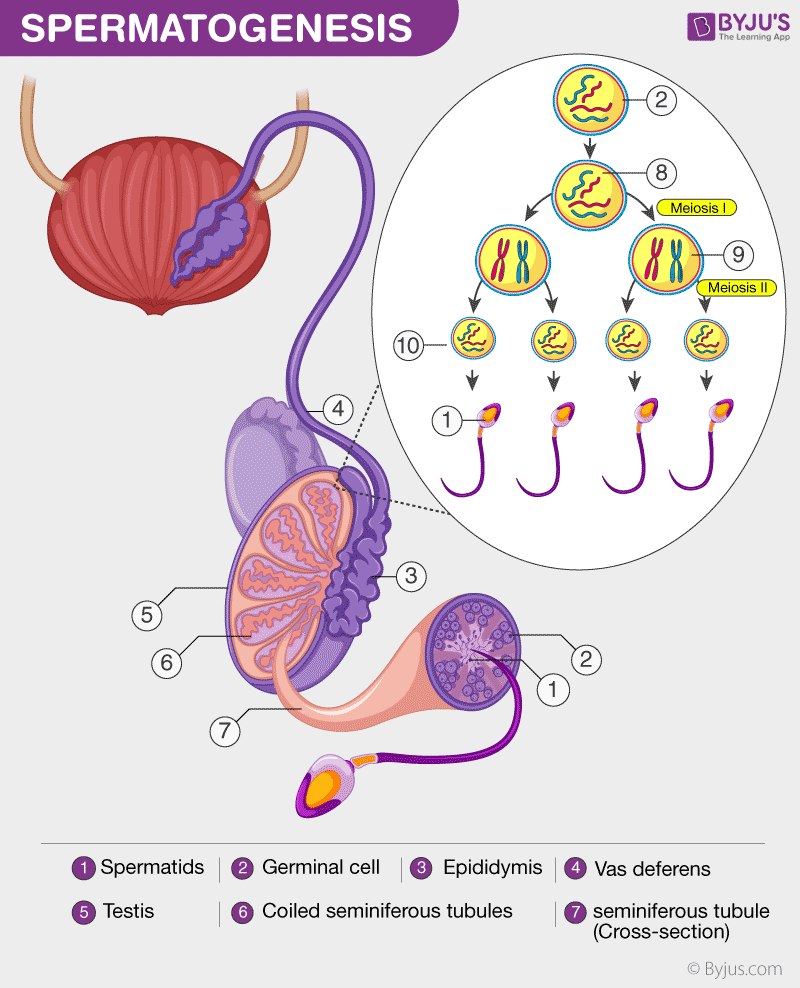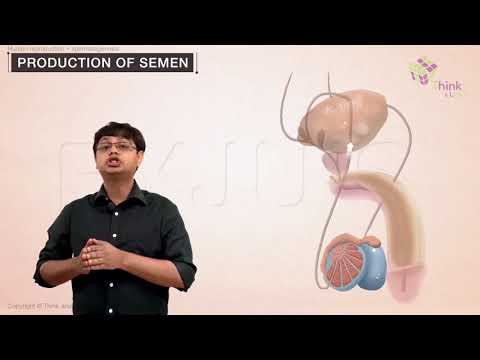Spermatogenesis is a process of developing male gametes, known as sperm within the male reproductive organs, the testes. In this process, each sperm (haploid,
containing a single copy of each chromosome. In order to create the haploid gamete, a cell undergoes the process of meiosis in which the genome is replicated and divided twice to produce four haploid gametes.
This process generally occurs in the seminiferous tubules of the testes following different stages. It is followed by maturation in the epididymis where they are secreted in the form of semen along with glandular secretions. This process begins during puberty and ends only when the individual dies. The complete process of spermatogenesis in males are carried out by the actions of Leydig cells, hypothalamus, and pituitary gland The quantity of these sperms gradually reduces with the age and finally leads to infertility.
Also Read: Difference between spermatogenesis and oogenesis
Purpose of Spermatogenesis
The process of Spermatogenesis occurs to create mature male gametes, which then fertilize female gametes to create a zygote, a single-celled organism. This results in cell division and multiplication to create a fetus. For a healthy offspring, the number of chromosomes must be maintained properly across the body as failure can lead to some abnormalities.
Process of Spermatogenesis

Stage 1: The Diploid spermatogonia is situated in the seminiferous tubules which include twice the total number of chromosomes. This replicates mitotically in interphase before the method of meiosis 1 to create 46 pairs of sister chromatids.
Stage 2: In this, the chromatids allow the exchange of genetic information through the synapsis process. It is done before dividing into haploid spermatocytes through meiosis.
Stage 3: In this division, the new two daughter cells will further divide into 4 spermatids, having unique chromosomes that are approximately half in number to the original spermatogonium.
Stage 4: In this stage, the cells move from the lumen of the testes to the epididymis. They get mature and developed into four sperm cells with the growth of microtubules on the centrioles to develop an axoneme. The remaining centrioles elongate and develop into sperm tail.
Factors Affecting Spermatogenesis
This process seems to be very sensitive and can easily be affected by minute changes in the hormone level. For example- testosterone is developed through the hypothalamus, Leydig cells, and pituitary gland. This process is very sensitive to changes in temperature, deficiency in the diet, alcoholism, exposure to drugs and the presence of disease can affect the rate of sperm formation adversely.
Stay tuned to learn more about Spermatogenesis, its process or any other related topics only at BYJU’S Biology.
Recommended Video:


Comments